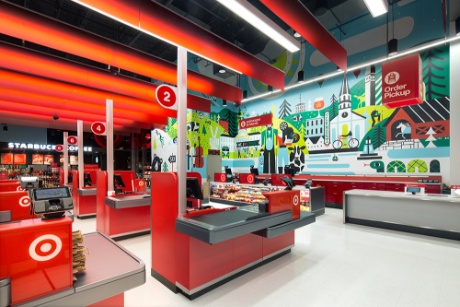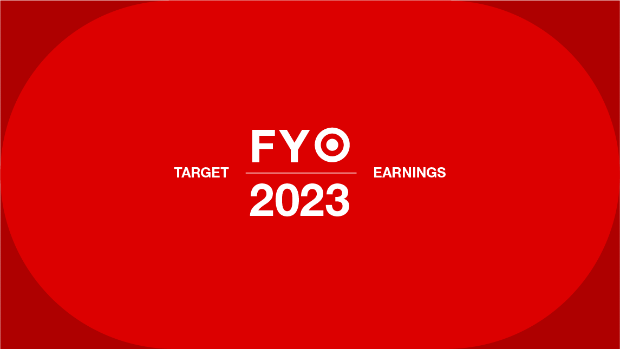In just a few days, on Sept. 24, the country will celebrate a momentous milestone as the National Museum of African American History and Culture opens its doors to the public on the mall in Washington, D.C. The project, with its legislation signed in 2003 under President George W. Bush, and completed in 2016 under President Barack Obama, represents more than 12 years of dreaming, planning and building. Inside? A host of exhibits and artifacts that illustrate American history through the lens of the African American experience. Check out this video for a behind-the-scenes look at what’s to come:
The opening has special meaning for the Target team—we’re a founding donor and grand opening sponsor of the museum, and our chairman and CEO Brian Cornell serves on its advisory board. A Bullseye View sat down with Brian and the museum’s director, Lonnie Bunch, to hear more about the grand opening plans and what the museum will mean for our country and the world.
How do you hope the museum will impact and inspire its visitors?
Lonnie: This museum doesn’t just tell the story of African Americans, but of all Americans. We look forward to facilitating moments in time of reflection and celebration for everyone—a place of discovery, refuge and reconciliation. We’re committed to telling the unvarnished truth of our American history and relaying to visitors that even the nuanced stories you’ll find are central to a national story.
We’ll be a museum that makes the richness of this culture available to the world. Ultimately, it’s my hope that—by having spent time in this museum, by having participated in a public program and processing the significance of what you see, hear and even taste—the institution will play a significant role in pushing America to an even more perfect union.
Brian: Serving as an advisory board member over the last year, I’ve seen up close how this museum will be a place where visitors can come and learn, reflect, understand more about each other, and ultimately be more accepting of all people—and that’s very powerful to me. So I’m humbled to be a part of this important project that will help our nation become more inclusive.
Lonnie and his team have created a place with the power to inspire real change. And we want to help visitors keep those conversations going after they’ve passed through the museum doors. We’ve been thrilled to support the development of the Target Learning Center at The Museum, a space inside where people of all ages can convene to take a deeper look at our history, discuss with each other and apply the learnings to their everyday lives. Visitors will find interactive displays and lots of comfortable seating—it’s a great spot to take a break, meet new friends and talk about what they’re learning.
How did the museum build its collection over the years?
Lonnie: That was one of the biggest challenges we faced—building a Smithsonian-sized collection of this quintessential American narrative was no easy feat. Collecting is something that began long before we even had a designated site. Early on, I realized that so much of our history was hidden in plain sight. The objects we’d need to tell of the African American experience were still tucked away in the basements and trunks of millions of Americans.
With that understanding—and stealing a page from the Antiques Roadshow book—I envisioned the museum collecting on a national level, in a way that would honor stories and treasures hidden for generations. So we launched the Save our African American Treasures campaign in cities across the U.S., and asked people to bring their artifacts—to learn more about them, but more specifically to learn how to care for them. In many instances, we encouraged people to share their objects and stories with their local museums and cultural centers. This campaign was a way for us to spread the message that we are here and we care about your artifacts and want you to know how to care for them as well. Anything we’d be crazy to pass up came back to D.C. with us.
Tell us about some the pieces in the collection that really stand out to you.
Lonnie: One of my favorites is the Freedom Papers, from a gentleman by the name of Joseph Trammell. Mr. Trammell was a slave in Loudoun County who gained his freedom in the 1850s. He kept the piece of paper certifying he was free with him every day, protected in a handmade tin wallet. The fact that his family kept it, and that his descendants gave it to us, was very humbling for me.
Another favorite of mine is Chuck Berry’s Cadillac, and that’s just one of those things you have to see to believe.
Brian: I couldn’t stop thinking about the baseball signed by the 1953 Brooklyn Dodgers team, including Jackie Robinson, the first African American to break the color line and play in Major League Baseball—and one of my greatest heroes. His story is a reminder of how much change an individual can inspire. In a time of segregation and hatred, it’s difficult to imagine the courage and perseverance it must have taken to step onto the field, confront those obstacles and start creating change. This spring at UCLA, my alma mater, they unveiled a bronze monument to ‘Number 42,’ one the school’s most revered and celebrated graduates. One of his most famous quotes is inscribed at the base that reads: ‘A life is not important except in the impact it has on other lives.’ And in my own life, be it as a CEO, a father or a friend, I often reflect on those words and use them as guidance.
That baseball is just one of tens of thousands of artifacts to discover. Lonnie has dedicated 10-plus years of extraordinary leadership to this project, and his team has spent an incredible amount of time and energy bringing the museum to life. The result is truly breathtaking.
Looking back on the journey to bring this museum to life, what are you most proud of?
Lonnie: We managed to achieve a dream centuries in the making—to build a living monument to people whose experiences and contributions have so often been left out of our national story. Just as our ancestors endured unimaginable trials to survive, despite every setback along this generational journey, we’ve arrived to this moment. I’m extremely proud to honor and uphold this great legacy of triumph against all odds.
I’m also very proud of the relationships we’ve created with our members, our donors, and the Washington, D.C., community along the way. It’s truly been a community effort spanning generations, and a great joy to watch people champion a cause they truly believe in.
Brian: For me, it’s being a part of this storytelling partnership. As its donors and partners, we all have roles to play and stories to add to the broader tale of our common experience. Not just to help collect and preserve these stories, but bring them to life and help them live on. No one segment—whether business or the arts or the government—can do that alone. I’ve had the good fortune to live in many countries and work with teams across the globe. And what I’ve seen, time and again, is the power that individuals, organizations and trusted brands can bring to the quest for greater opportunity and equality.
What are you most excited about as the museum celebrates its grand opening?
Brian: I’m looking forward to being in Washington, D.C., this weekend to celebrate with the museum team and visitors in person. This enormous project came to life through the hard work of so many partners, and I can’t wait for the emotional moment when this national treasure opens to the public. And over the years, this institution will continue to grow and share more great stories in new ways. It was built to hold up and honor the truth of the American people and our history. It’s going to inspire visitors—and hopefully our country—not only to look back, but to move forward with purpose. I’m proud the Target team could be a part of that.
Lonnie: I’m most excited to celebrate this national achievement with my family and friends, but especially my mother. The fact that she will be standing there beside me on this momentous day means a great deal to me. I’m also excited to watch the President of the United States, President Barack Obama, address our nation and celebrate our opening to the world. I imagine watching this dream-turned-reality will touch many people across the globe and I’m humbled to be a part of this moment. Aside from that, I’m looking forward to Sept. 25, when I can take a nap and rest easy knowing that a new journey for us all is just beginning!
Excited to learn more? Check out the National Museum of African American History and Culture’s website for more information and resources, and check out Diversity & Inclusion at Target to see more of what our teams are doing.




